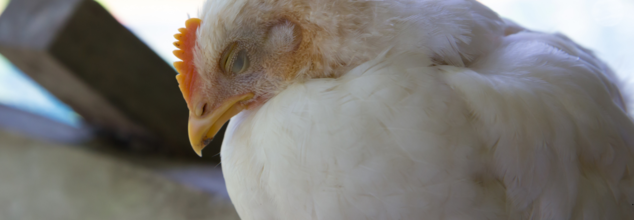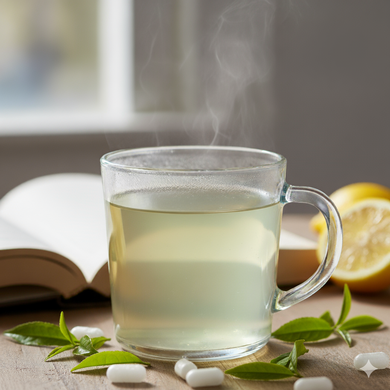- Health Conditions A-Z
- Health & Wellness
- Nutrition
- Fitness
- Health News
- Ayurveda
- Videos
- Medicine A-Z
- Parenting
- Web Stories
Bird Flu In US: How To Eat Eggs Safely?

Amid many seasonal diseases, viruses and the spread of bacteria, the US is also coping up with the bird flu outbreak with as many as 27 cases of avian influenza reported in the country since April 2024. Four workers at an egg farm in Southeast Washington's Franklin County were also found positive. The reason was exposure to infected poultry. Five other states in the US have also identified human infections with the virus amid the other cases found in poultry, dairy cattle and wildlife.
Where Does It Come From?
Bird flu primarily infected farmworkers or those in close proximity to livestock. The first human bird flu case in the US was reported in 2022, to a person who was also involved in farm-working.
While this flu is largely confined to birds in the wild and poultry, recent outbreaks have been reported in mammals too, including cattle.
Symptoms
Common symptoms include high temperature, chills, body pain, cough and cold, and difficulty in breathing. It is also common to experience gastronomical symptoms like diarrhoea, stomach pain, sickness, chest pain, and nose and gum bleeding.
How To Consume Poultry Safely?
Pasteurisation and cooking them at high temperatures can curb the threat. It is also important to handle your poultry products when you are buying and storing them.
Also, avoid drinking raw milk to kill avian influenza A(H5N1).
How To Handle Chicken While Shopping?
The meat juice can spill over and contaminate other food items, therefore it is extremely important to store it properly, in a way that it does not contaminate another food item. Always store it in a cool bag when you are transporting it and refrigerate and freeze the meat for the first two hours of buying.
You must also cook your chicken so the viruses do not survive on the chicken.
How to Handle Eggs And Consume It Safely?
Flu viruses can infect chicken eggs by entering through the eggshell. The eggshells are smaller than the pores of eggshells, which means viruses can enter the eggs and the egg's surface will still be protected. However, it is still important to handle it safely.
As per the US Food and Drug Administration, cooking poultry, eggs and other animal products to the proper temperature and preventing cross-contamination between raw and cooked food.
This Simple Green Tea Addition May Help Protect Against Alzheimer’s, Researchers Say

Credits: Canva
Alzheimer’s disease (AD) is a progressive brain disorder that slowly impairs memory, reasoning, and behavior, eventually disrupting daily life. It affects nearly six million Americans and is believed to result from the buildup of two abnormal proteins, beta-amyloid, which forms sticky plaques, and tau, which creates twisted tangles inside brain cells.
While there is no cure yet, research suggests that diet may help lower the risk or delay the onset of Alzheimer’s. The NIA notes that eating patterns like the Mediterranean or MIND diets, along with certain foods and supplements, might support brain health by reducing inflammation, improving circulation, and protecting cells from oxidative stress.
If you are wondering what foods may help, green tea is worth considering. Rich in antioxidants—especially epigallocatechin gallate (EGCG)—this centuries-old drink has long been linked to better brain health. According to Medical News Today, EGCG may help protect neurons from damage, and when combined with vitamin B3, also known as nicotinamide, it could provide an even stronger defense against Alzheimer’s.
How Green Tea Might Protect Against Alzheimer’s
Green tea is more than a relaxing beverage as it may play a role in protecting the brain from Alzheimer’s disease. A 2022 review in Nutrients found that EGCG helps prevent beta-amyloid plaques from forming, which are one of the major hallmarks of the disease.
Another study published in the International Journal of Molecular Sciences in 2022 showed that EGCG might even break down existing beta-amyloid proteins, possibly slowing how quickly Alzheimer’s progresses.
The benefits don’t stop there. Green tea’s antioxidants help neutralize free radicals, reducing oxidative stress that can harm brain cells. They may also lower inflammation levels, another key factor linked to Alzheimer’s risk. Additionally, green tea supports better blood flow to the brain through anti-atherosclerotic and anti-thrombotic actions—meaning it helps prevent cholesterol buildup and blood clots, both of which can interfere with oxygen delivery to the brain.
Pairing Green Tea And Vitamin B3
Recent findings suggest that combining green tea with vitamin B3 could take its protective potential further. A 2025 study in GeroScience found that pairing EGCG with nicotinamide improved brain cell energy levels, helping them function more like those in younger brains. Researchers from the University of California, Irvine, explained that this combination might help restore the brain’s ability to clear beta-amyloid plaques, strengthening its natural defense mechanisms.
Adding this duo to your daily life is easy. Vitamin B3 is present in many common foods, like chicken, turkey, salmon, peanuts, avocado, and rice, or it can be taken as a supplement. Aim for three to five cups of green tea each day with meals that include these foods, as recommended by The Times of India. If you prefer supplements, choose nicotinamide and check with your doctor before starting to ensure it’s safe with your medications or health conditions.
While the combination of green tea and vitamin B3 shows promise, it is not a cure for Alzheimer’s. Scientists emphasize that more research is needed to confirm its effectiveness. Still, incorporating both into a balanced lifestyle may offer a simple, accessible way to support long-term brain health and possibly keep the mind sharper with age.
Christmas Dinner Could Disappear This Year Due To Bird Flu Outbreak In UK

Credits: Canva
Christmas dinners could 'disappear', all thanks to the bird flu outbreak across UK. This warning has come from a poultry farmer as the cases of bird flu have gone up from North Yorkshire, Lincolnshire, Devon, and East Sussex.
This warning came from farmer Andrew Goodman, who works at Goodman's Geese in Great Witley, Worcestershire, as reported in BBC. He said that the threat of bird flu infection was a "continual worry", especially when it is ahead of the festive period. He told BBC that a single outbreak of the disease could lead to 10,000 Christmas lunches to disappear.
"You're finished basically. If we got it, all the birds would be slaughtered on the farm and then, with our free-range system, you're not allowed to restock for 12 months. Which would mean no birds for Christmas next year."
What Is Bird Flu?
Bird flu spreads from bird droppings and saliva. This happens especially when they feed on birdfeed and water.
Authorities have expanded compulsory poultry housing measures—previously limited to the North, Midlands and East—to all of England starting Thursday, in an effort to curb disease transmission. A nationwide Avian Influenza Prevention Zone also remains in force, mandating stringent biosecurity and hygiene protocols.
Health and Me had earlier reported that the UK had ordered 5 million vaccines against bird flu, also dubbed as "one mutation from being the next COVID". The comparison of bird flu with COVID, comes from the mutation that has recently been seen in the avian flu, which has affected animals and humans alike. Similar to how the corona virus previously also mutated, and continues to do so.
What are the symptoms one must look out for?
- Pink eye
- fever
- fatigue
- cough
- muscle aches
- sore throat
- nausea
- vomiting
- diarrhea
- study or runny nose
- shortness of breath
Birds flu in humans
The first case of the recent bird flu outbreak in the US came in September, from a Missouri resident. However, the person did not have any exposure to infected animals. This is what is also raising the concern for mutation and the possibility of other forms of spreading. This was also a rare case as the infection did not happen due to exposure. Previously, all such cases in the US involved contact with farm animals or contaminated environment.
Can bird flu come from other animals?
Bird flu primarily infected farmworkers or those in close proximity to livestock. The first human bird flu case in the US was reported in 2022, to a person who was also involved in farm-working.
While this flu is largely confined to birds in the wild and poultry, recent outbreaks have been reported in mammals too, including cattle.
While 14 cases are in the US, the CDC notes that the risk to the general public is still at low, however, this warning could change. "Although human infections are rare, circumstances may evolve as we learn more about this case," said the CDC in a statement.
High-Dose Vitamin D Supplements May Harm Your Health, Doctors Tell Why

Credits: Canva
A doctor has issued a warning that a widely used winter supplement could pose health risks if taken in excess. The expert explained that consuming too much of this vitamin may damage your bones. Many people turn to supplements to make sure they meet their daily vitamin and mineral requirements. While a balanced diet should cover most of your needs, supplements can be helpful to prevent deficiencies.
Why Vitamin D Matters?
Vitamin D is essential for the body and is naturally obtained through sunlight exposure. Because sunlight is limited during autumn and winter, the NHS recommends taking vitamin D supplements during these months. This vitamin helps regulate calcium and phosphate levels, which are crucial for healthy bones, teeth, and muscles. A deficiency can lead to bone deformities such as rickets in children and bone pain in adults caused by a condition known as osteomalacia.
The Risks of Taking Too Much Vitamin D
As with any supplement, vitamin D must be taken carefully. In a TikTok video, Dr. Suraj Kukadia, also known as Dr. Sooj, warned against taking “high doses” of vitamin D. He said, “Taking a really high dose of vitamin D for a prolonged period can make your bones more brittle.” His caution aligns with NHS guidance.
According to the NHS: “Taking too many vitamin D supplements over a long period can cause excessive calcium to build up in the body (hypercalcaemia). This can weaken bones and damage the kidneys and heart.”
Vitamin D Recommended Dosage
The standard recommended dose of vitamin D is 10 micrograms (mcg) or 400 IU per day. Consuming more than 100 mcg (4,000 IU) daily could be harmful.
The NHS advises: “For most people, 10 micrograms a day is sufficient. Do not take more than 100 micrograms a day as it could be dangerous. This applies to adults, including pregnant and breastfeeding women, the elderly, and children aged 11 to 17. Children aged 1–10 should not exceed 50 micrograms (2,000 IU) daily. Infants under 12 months should not take more than 25 micrograms (1,000 IU) daily.”
People with certain medical conditions may need to adjust their intake, so it’s important to consult a doctor if unsure. Always follow your doctor’s guidance if they recommend a different dosage.
It’s not possible to overdose on vitamin D from sunlight alone. However, prolonged sun exposure carries risks of skin damage and skin cancer, so it’s important to protect your skin while outdoors.
Food Sources of Vitamin D
Certain foods can help you maintain healthy vitamin D levels, including:
Oily fish – salmon, sardines, trout, herring, mackerel
Red meat
Egg yolks
Fortified foods – such as some spreads and breakfast cereals
Liver – avoid liver if pregnant; check pregnancy food guidance
By sticking to recommended doses and combining supplements with a balanced diet, you can safely maintain your vitamin D levels while protecting your bones and overall health.
Disclaimer: This article is for informational purposes only and is not a substitute for professional medical advice. Always consult a qualified healthcare provider before starting, stopping, or changing any supplement or medication. Individual needs may vary based on age, health conditions, and medical history.
© 2024 Bennett, Coleman & Company Limited

